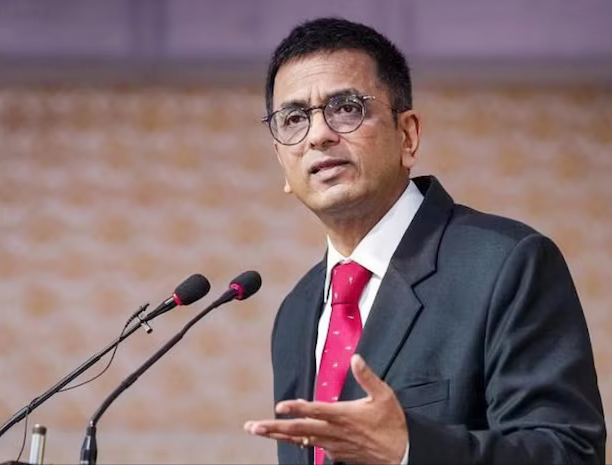
New Delhi, Sept 27:
Agencies
The Chief Justice of India, DY Chandrachud on Thursday said that technology, as we experience it today, is far different from what it was when the Constitution was drafted, adding that the internet and social media and all their attendant applications have rapidly altered the course of life in the last decade.
"Technology, as we experience it today is far different from what it was in the lives of the generation which drafted the Constitution.
Information technology, together with the internet and social media and all their attendant applications, have rapidly altered the course of life in the last decade," CJI said while addressing a memorial lecture on renowned advocate MK Nambyar.
CJI further said that today's technology renders models of application of a few years ago obsolete.
"Hence, it would be an injustice both to the drafters of the Constitution as well as to the document which they sanctified to constrict its interpretation to an originalist interpretation. In India, we describe the Constitution as a living instrument simply for the reason that while it is a document that enunciates eternal values for Indian society, it possesses the resilience necessary to ensure its continued relevance. Its continued relevance lies precisely in its ability to allow succeeding generations to apply the principles on which it has been founded to find innovative solutions to intractable problems of their times. In doing so, we must equally understand that our solutions must continuously undergo a process of re-engineering," CJI said while delivering the MK Nambyar Memorial Lecture.
CJI further said that another significant example is the evolution of environmental constitutionalism, which lies at the confluence of constitutional law, international law, human rights, and environmental law.
"The world today stands in a precarious situation. International bodies suc Technology, as we experience it today, is far different from what it was in the lives of the generation which drafted the Constitution.
Information technology, together with the internet and social media and all their attendant applications, have rapidly altered the course of life.
In India, we describe the Constitution as a living instrument simply for the reason that it enunciates eternal values for Indian society.
The world today stands in a precarious situation. International bodies have raised alarm bells and contend that the impacts of climate change could be irreversible by 2030.
CJI said that the understanding of the Constitution as a living document aids constitutional courts in understanding new, novel problems.
"It also facilitates the Court in finding a jurisprudential basis for solutions to existing social problems. Let's take the example of Article 17 of the Constitution, which abolishes untouchability. The context of this provision was the stratified society we found ourselves in. Caste was an important axis of social organisation and those who found themselves at the bottom of this occupational, social hierarchy were subjected to untouchability solely on account of their caste," CJI said.
"The basis, remember, was an occupational hierarchy of castes and ritual impurity associated with certain occupations. The framers of the Constitution debated the scope of this prohibition in some detail. The argument was essentially that if untouchability were not defined and limited in its application to caste, it would lead to unwarranted over-broad application," CJI said.
It is tempting to pit the framers' so-called original intent against the notion of living constitutionalism, CJI Chandrachud said as it pointed out that Nambyar demonstrated that the solution lies between a complete abandonment of their vision and its uncritical acceptance. |
